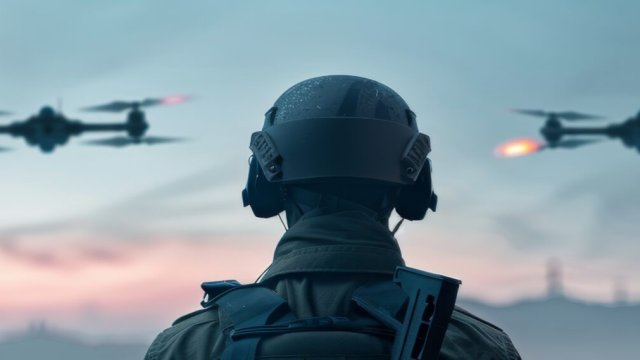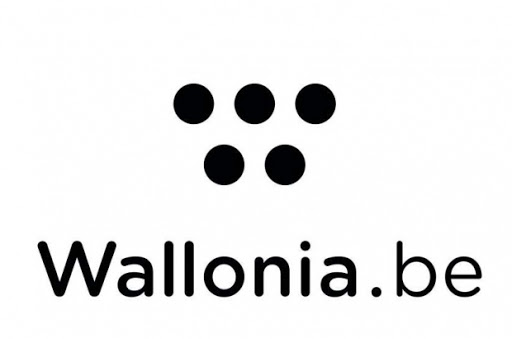The Battle Field of Things Drone Edition hashtagHackathon 2025 is calling all innovators from the drone ecosystem! 🇧🇪

Who are you? 👇
🚁 Drone Manufacturers & Drone Enthusiasts
💻 Software Developers & Hardware Engineers
🎓 Researchers from Universities and Colleges
🤖 AI and Robotics Specialists
🛰️ Sensor and Payload Developers
🛡 Defence Contractors
🏛 Governmental and Non-Governmental Organisations
🌎 And many more!
Come alone or bring a team of colleagues and be part of a groundbreaking event that unites the entire drone ecosystem of Belgium, both civilians and army staff!
All detailed information can be found here :
"The Battlefield of Things 2: Drones" is a two-and-a-half-day innovation event that will bring Belgium Defence personnel together with industry experts, drone enthusiasts, researchers, and students.
Together, participants will push the boundaries of UAS technology. They will also look at the business side of growing the drone ecosystem in Belgium.
For both experienced professionals and passionate newcomers, this event is a unique opportunity to work on drone hardware and software, to tackle real-world challenges proposed by Belgian Defence, to build network across the drone ecosystem, and shape the future of drone technology.
The Battlefield of Things 2: Drones hackathon revolves around three key challenges: Technology Innovation, Ecosystem Innovation, and Procurement Innovation.
Each challenge includes specific problems identified through workshops with Belgian Defence and industry experts, ensuring real-world impact.
Challenges (details below)
- Technology challenges
- Ecosystem Challenges
- Procurement Challenges
Experts
A hackathon wouldn’t be complete without our drone experts. 👇
They have carefully selected experts in the field of drones. These experts will deliver very specific and unique insights that will help you develop the next concepts for the Belgian Defence. These experts will challenge you, will guide you and will make sure your ideas will win at the end.
During dedicated check-in sessions, teams connect with specialists like:
- Gauthier Coton: Belgian Defence Senior Officer (UAS, Training Aircraft, EW lead)
- Jean V.: Defence Tech Specialist (C-UAS/UAS integration, TAK ecosystem)
- Bart Theys: Flanders Make Drone Innovator (Advanced drone tech for defence)
- Bjorn Geuns: SkeyDrone Head of Projects (Drone operations management)
- Sven Nachtergaele: POM West-Vlaanderen Drone Cluster Manager (Ecosystem building)
Technology Challenge:
Belgian Defence 🇧🇪 is confronting critical drone technology challenges and looking way beyond the obvious solutions. Standard answers won't cut it – we need your most creative, blue-sky thinking to gain a real edge. Got a wild concept? Bring it! A working prototype is fantastic, but if that's not feasible, prove your point with a simulation, model, or even a compelling sketch.
First, how can we ensure drones remain effective even when GPS and RF signals are denied? We need low-cost solutions (max €300 hardware add-on) enabling complex tasks like recon, cargo delivery, or large-area searches in jammed environments. Think advanced sensors, intelligent swarming, onboard map reading, dynamic anti-jamming – or surprise us!
Equally critical is defending against mass drone threats. How might we design low-cost, fully autonomous anti-drone drones that a single operator can launch in seconds with minimal connectivity? Imagine designating a target and letting the drone handle the rest. And thinking ahead: can we make deployment and targeting completely automated?
Finally, let's empower our operators. Current 5-person drone teams are effective but large and detectable. How can we enable smaller crews, even a single operator, to skillfully manage multiple, diverse drones (ISR, repeater, bomber, FPV) simultaneously? Advanced HMI/AI interfaces are one path, but all revolutionary ideas are welcome!
Ready to reshape the future of drone operations? Share your groundbreaking concepts!
Ecosystem Challenge:
Some challenges are simply too big for any one company to tackle. But if we can pool resources of an entire ecosystem, we can move mountains.
Belgian Defence 🇧🇪 faces a potential shortage of skilled drone pilots in a rapid conflict escalation. While basic drone flying skills are easily taught, recruiting personnel with the right mindset and maintaining their military knowledge and skills is challenging.
Or how can we recruit and maintain around 1000 trained drone operators, considering current limitations like expensive equipment, limited airspace and resources for training, and constraints of drone simulators?
At the same time the drone industry faces many challenges. How can we build a useful, sustainable drone ecosystem to meet these challenges? How should this ecosystem be managed and financed?
Procurement Challenge
Belgian Defence 🇧🇪 would like to ensure national autonomy in drone production. Belgium's current drone manufacturing capabilities are insufficient for both peacetime and wartime demands.
Although BELDEF can support the development of a drone manufacturing ecosystem through R&D funding, this requires a solid foundation.
A successful Dual Use approach is a likely path to attain the necessary growth in manufacturing capacity to meet the needs of Belgian Defence.
How would the Belgian drone ecosystem (combining the private sector, academia, and Defence) need to be organised to become a competitive European actor for large-scale manufacturing contracts?
Think about – for example – pooling resources to substantially increase shared business development activity in the civilian and military space. Don’t forget other aspects (such as R&D and collective procurement) that might need to be coordinated.
Another way to ensure scalability of manufacturing, ease of in-the-field updates and upgrades to drones, interoperability between components and systems, and creating a genuine competitive advantage for the Belgian drone ecosystem is taking a Modular Open Systems Architecture (MOSA) approach adopted by all ecosystem members.
How can the Belgian drone ecosystem define an affordable drone system that follows a MOSA approach and ensures it stays up-to-date?
What’s more, currently available R&D budgets tend to focus on low-TRL research projects, leaving a gap for faster adoption of high-TRL research.
How might the Belgian drone ecosystem create and continuously evolve a shared technology roadmap in consultation with BELDEF?
50.795736377266, 5.2068328857422
Practical info
Drone Port - Hangar 27
Lichtenberglaan 1035
3800 Sint-Truiden
